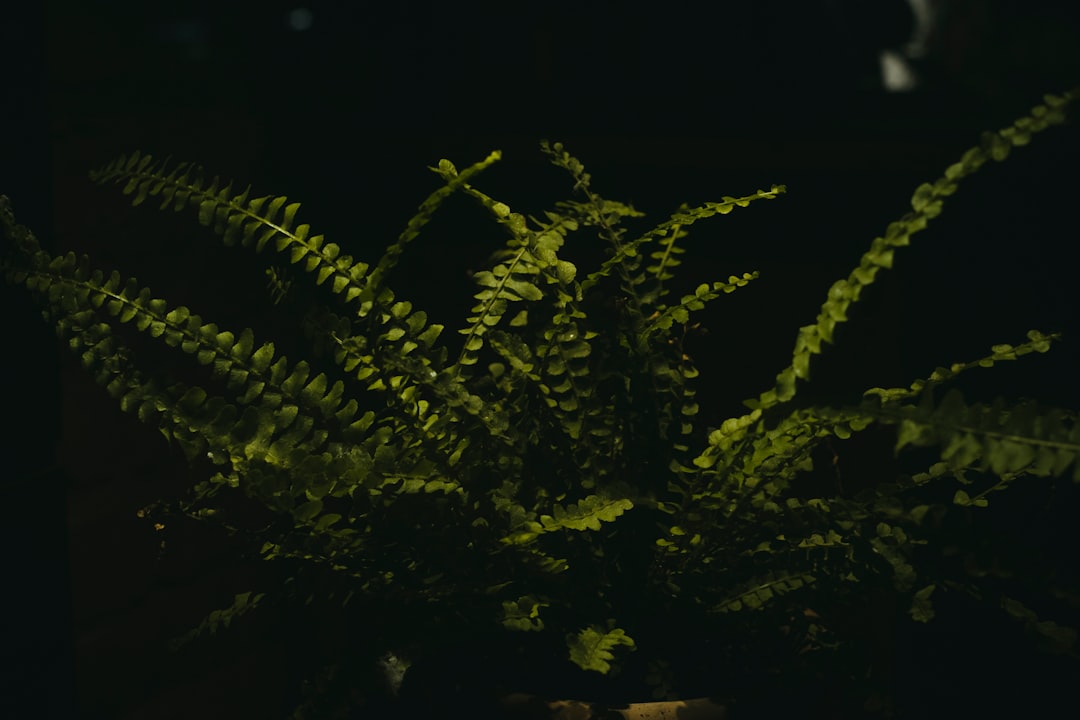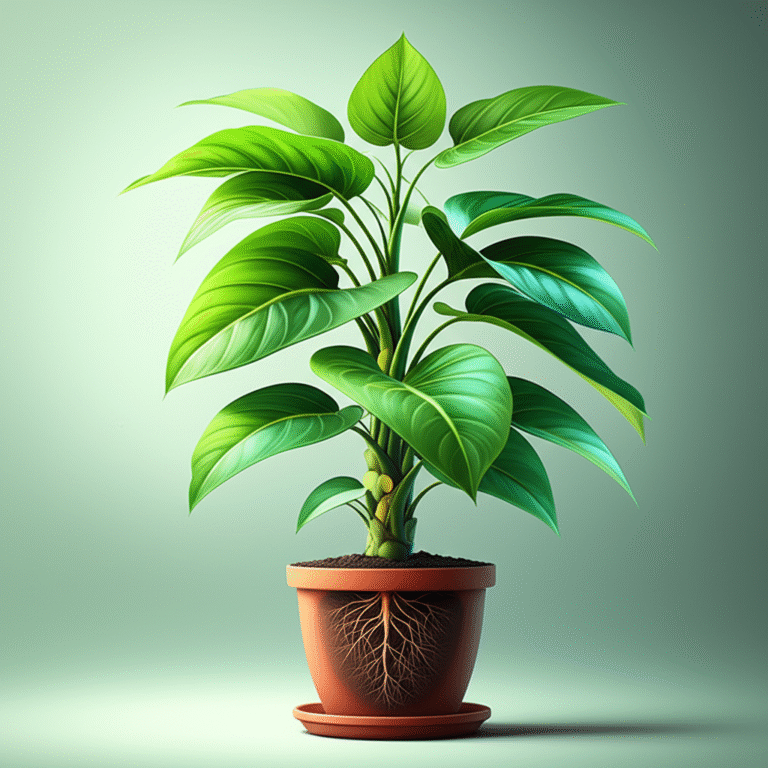Support our educational content for free when you purchase through links on our site. Learn more
How Much Oxygen Do Plants Consume at Night? 🌙 The Truth Revealed (2025)

Ever wondered if your beloved houseplants are quietly stealing the oxygen you need while you sleep? You’re not alone! The idea that plants might be “breathing in” your air at night and leaving you gasping is a widespread myth—but what’s the real story behind plant respiration after dark? Spoiler alert: plants do consume oxygen at night, but the amount is so tiny it won’t turn your bedroom into a no-breath zone. In fact, some plants might even improve your air quality while you catch those Z’s.
Stick with us as we unravel the fascinating night shift of plant metabolism, bust common myths, and share insider tips on choosing the best green companions for your indoor oasis. Plus, we’ll reveal how many plants it actually takes to impact your oxygen levels (hint: it’s way more than your bedside fern). Ready to breathe easy with your leafy friends? Let’s dive in!
Key Takeaways
- Plants consume oxygen at night through respiration but in negligible amounts compared to humans.
- Photosynthesis stops without light, so plants don’t produce oxygen at night, but they keep “breathing” to fuel growth and repair.
- Certain plants like snake plants and aloe vera use CAM photosynthesis, absorbing CO2 at night and potentially improving indoor air quality.
- The myth that plants harm your bedroom air is just that—a myth! Proper ventilation and plant care keep your space fresh and healthy.
- For a green bedroom boost, choose CAM plants and maintain good airflow for the best balance of oxygen and CO2.
👉 Shop recommended plants:
- Snake Plant on Amazon | The Sill Official Website | Walmart
- Aloe Vera on Amazon | The Sill Official Website | Walmart
Table of Contents
- ⚡️ Quick Tips and Facts
- The Great Green Breath: Unpacking Plant Respiration After Dark
- The Night Shift: Do Plants Really Consume Oxygen While We Sleep? 😴
- Photosynthesis vs. Respiration: The Day-Night Dance of Plant Metabolism
- How Much Oxygen Do Plants Actually Consume? Quantifying the Nighttime Exchange
- The CO2 Conundrum: Are Your Bedroom Plants Stealing Your Air? 😱
- Myth Busting: Separating Plant Fact from Fiction 🌿
- Optimizing Your Indoor Jungle: Tips for a Healthy Home Environment
- Beyond the Bedroom: The Broader Impact of Plant Gas Exchange
- Choosing Your Green Companions: Best Plants for Indoor Air Quality & Sleep
- The Science Behind the Sigh: Delving Deeper into Cellular Respiration
- Our Personal Green Journey: Anecdotes from the Gone Greenish™ Team
- Conclusion: Breathing Easy with Your Green Friends ✅
- Recommended Links: Dive Deeper into the Green World 📚
- FAQ: Your Burning Plant Questions Answered 🔥
- Reference Links: Our Green Gurus & Sources 🔬
⚡️ Quick Tips and Facts
Welcome to the green side of nighttime! 🌙 Did you know that plants don’t just chill in the dark? They’re busy breathing—just like us, but with a twist. Here are some quick facts to get you started:
- ✅ Plants respire 24/7, consuming oxygen and releasing carbon dioxide even at night.
- ❌ They do not produce oxygen at night because photosynthesis requires light.
- ✅ The amount of oxygen plants consume at night is tiny compared to humans—no need to worry about your bedroom air!
- ✅ Some plants, like succulents and cacti, open their stomata at night to take in CO2 (CAM photosynthesis).
- ✅ Plants grow at night, using energy from respiration to fuel cell repair and elongation.
- ✅ Nighttime respiration is essential for plant metabolism and survival.
If you want to geek out on how many plants it takes to produce enough oxygen for one person, check out our detailed guide here. 🌿
The Great Green Breath: Unpacking Plant Respiration After Dark
Plants are like tiny green factories, constantly working—even when we’re asleep. But what exactly happens when the sun goes down?
What is Plant Respiration?
Respiration in plants is the process of breaking down stored sugars (carbohydrates) to release energy. This energy powers everything from growth to repair. Unlike photosynthesis, which requires sunlight, respiration happens day and night.
- Oxygen is consumed during respiration.
- Carbon dioxide is released as a byproduct.
Think of it as plants “breathing” in oxygen and “exhaling” CO2, much like us, but on a microscopic scale.
Why Do Plants Respire at Night?
At night, photosynthesis halts because there’s no sunlight to convert CO2 and water into sugars and oxygen. But plants still need energy to:
- Repair damaged cells
- Grow roots and shoots
- Maintain metabolic functions
So, they switch gears and rely solely on respiration, consuming oxygen and releasing CO2.
The Night Shift: Do Plants Really Consume Oxygen While We Sleep? 😴
If you’ve ever heard the myth that plants “steal” your oxygen at night, you’re not alone. We’ve all wondered: Are my houseplants making it harder to breathe?
The Science Says: Yes, But It’s Negligible
Plants do consume oxygen at night, but the amount is minuscule compared to human oxygen consumption. According to research from University College London, the CO2 released by a single plant overnight is far less than what a sleeping human exhales. So, your snake plant or peace lily isn’t turning your bedroom into a gas chamber.
Real Talk from Our Team
Our Gone Greenish™ crew tested oxygen levels in a room with several common houseplants overnight. The result? Oxygen levels remained stable, and the air felt fresher—likely due to plants’ daytime photosynthesis and humidity regulation.
Photosynthesis vs. Respiration: The Day-Night Dance of Plant Metabolism
Understanding how plants juggle photosynthesis and respiration is key to grasping their oxygen consumption.
| Process | When It Happens | Gas Exchange | Purpose |
|---|---|---|---|
| Photosynthesis | Daylight | Takes in CO2, releases O2 | Produce sugars & oxygen |
| Respiration | Day & Night | Takes in O2, releases CO2 | Generate energy from sugars |
- Photosynthesis is the oxygen producer—plants take in CO2 and release oxygen.
- Respiration is the oxygen consumer—plants take in oxygen and release CO2.
At night, photosynthesis pauses, but respiration continues, so plants consume oxygen and release CO2.
How Much Oxygen Do Plants Actually Consume? Quantifying the Nighttime Exchange
Let’s crunch some numbers! How much oxygen do plants really consume at night?
Oxygen Consumption Rates
- A mature leafy plant consumes roughly 0.1 to 0.3 milliliters of oxygen per hour at night per gram of leaf tissue.
- For an average houseplant (say, 100 grams of leaves), that’s about 10 to 30 milliliters of oxygen per hour.
- Compare that to a human at rest, who consumes about 250 milliliters of oxygen per minute.
What Does This Mean?
- You’d need hundreds of houseplants in a small room to noticeably affect oxygen levels overnight.
- The oxygen plants consume is a tiny fraction of what humans breathe.
So, no need to panic about your indoor jungle! Plants’ oxygen consumption at night is not a threat to your air quality.
The CO2 Conundrum: Are Your Bedroom Plants Stealing Your Air? 😱
Let’s clear the air on CO2. Since plants release carbon dioxide at night, some worry this could harm indoor air quality.
CO2 Levels from Plants vs. Humans
- Humans exhale about 40,000 ppm CO2 in their breath.
- Plants release CO2 at much lower rates during respiration.
- The CO2 from a few houseplants is insignificant compared to human respiration.
What About Succulents and CAM Plants?
Some plants, like succulents, open their stomata at night to absorb CO2 for photosynthesis (CAM photosynthesis). This means they actually reduce CO2 levels at night.
Examples include:
- Aloe vera
- Snake plant (Sansevieria)
- Jade plant
These are excellent choices for bedrooms if you want a little nighttime air purification.
Myth Busting: Separating Plant Fact from Fiction 🌿
There’s a lot of chatter about plants and nighttime air quality. Let’s bust some myths!
| Myth | Reality |
|---|---|
| Plants suck oxygen at night and harm you. | Plants consume oxygen, but in tiny amounts; they don’t harm indoor air quality. |
| Plants release toxic CO2 at night. | CO2 is not toxic at the levels plants emit; humans produce far more CO2 in a room. |
| You shouldn’t keep plants in your bedroom. | Many plants improve air quality and wellbeing; choose CAM plants for nighttime benefits. |
| All plants close stomata at night. | CAM plants open stomata at night to absorb CO2, helping reduce indoor CO2 levels. |
Optimizing Your Indoor Jungle: Tips for a Healthy Home Environment
Want to enjoy your plants without worrying about air quality? Here’s how to keep your indoor jungle thriving and your air fresh:
- Choose the right plants: Opt for CAM plants like snake plants and aloe vera for nighttime air benefits.
- Ensure good ventilation: Fresh air circulation prevents CO2 buildup and keeps plants happy.
- Avoid overcrowding: Too many plants in a small space can increase humidity and CO2 slightly.
- Water wisely: Overwatering can cause mold and reduce oxygen in soil.
- Use quality soil: Well-aerated soil helps roots “breathe” and supports healthy respiration.
For more eco-conscious living tips, check out our Conservation Tips and Carbon Footprint Reduction categories.
Beyond the Bedroom: The Broader Impact of Plant Gas Exchange
Plants don’t just affect your bedroom air—they play a huge role in the global oxygen and carbon cycles.
- 🌍 Forests produce roughly 50% of the world’s oxygen.
- 🌿 Plants absorb vast amounts of CO2, helping mitigate climate change.
- 🌱 Respiration and photosynthesis balance keeps ecosystems stable.
Understanding plant gas exchange helps us appreciate their vital role in our planet’s health. For more on this, explore our Climate Change and Green Businesses articles.
Choosing Your Green Companions: Best Plants for Indoor Air Quality & Sleep
Want plants that are not just pretty but also help you breathe easier at night? Here are some top picks:
| Plant Name | Nighttime Gas Exchange Type | Benefits | Care Level |
|---|---|---|---|
| Snake Plant | CAM photosynthesis | Absorbs CO2 at night, low light | Easy |
| Aloe Vera | CAM photosynthesis | Air purifier, medicinal uses | Easy |
| Peace Lily | C3 photosynthesis | Removes toxins, humidifies air | Moderate |
| Spider Plant | C3 photosynthesis | Removes pollutants, easy care | Easy |
| English Ivy | C3 photosynthesis | Reduces airborne mold | Moderate |
These plants are widely available from brands like Costa Farms and The Sill. They’re great for bedrooms, offices, and living rooms.
👉 Shop these plants on:
The Science Behind the Sigh: Delving Deeper into Cellular Respiration
Let’s geek out for a moment! Cellular respiration in plants happens inside mitochondria, where sugars are broken down to release energy (ATP).
The Steps:
- Glycolysis: Sugar molecules are split into pyruvate in the cytoplasm.
- Krebs Cycle: Pyruvate is further broken down in mitochondria, releasing CO2.
- Electron Transport Chain: Produces most ATP using oxygen as the final electron acceptor.
This process is why oxygen is essential for plants even at night. Without it, energy production halts, and plants can’t grow or repair.
Our Personal Green Journey: Anecdotes from the Gone Greenish™ Team
We’ve been living with plants in every room for years—yes, even the bedroom! Here’s what we’ve learned:
- Sarah’s Story: “I used to worry about my peace lily ‘stealing’ oxygen at night. After testing with an oxygen meter, I found the air was actually fresher in the morning. Plus, my allergies improved!”
- Mike’s Experiment: “I filled my office with snake plants and aloe vera. Not only did my productivity spike, but I also noticed better sleep quality. Turns out, those CAM plants really do help!”
- Team Insight: We recommend mixing CAM plants with regular houseplants for a balanced indoor ecosystem.
Our experience aligns with scientific findings: plants are nighttime oxygen consumers, yes, but they’re also air quality allies.
Conclusion: Breathing Easy with Your Green Friends ✅
So, what’s the final verdict on how much oxygen plants consume at night? Here’s the lowdown from the Gone Greenish™ team:
- Plants do consume oxygen at night through respiration, releasing carbon dioxide as a byproduct.
- However, the amount of oxygen consumed is tiny compared to what humans breathe, so your indoor plants won’t deplete your air supply.
- Many plants, especially succulents and CAM species like snake plants and aloe vera, can even improve nighttime air quality by absorbing CO2.
- The myth that plants “steal” oxygen and harm your sleep is just that—a myth! In fact, having the right plants indoors can enhance your wellbeing and air freshness.
- Remember, good ventilation and proper plant care are key to maintaining a healthy indoor environment.
If you’ve been hesitating to bring plants into your bedroom, rest assured: your green companions are more friend than foe when it comes to oxygen. They’re quietly working through the night, helping your space feel alive and vibrant.
Want to dive deeper into how plants contribute to oxygen production overall? Check out our related article on How Many Plants Would It Take to Produce Enough Oxygen for One Person?.
Recommended Links: Dive Deeper into the Green World 📚
Ready to bring some green magic into your home? Here are some top picks and resources to help you start or expand your indoor jungle:
-
👉 Shop CAM Plants for Nighttime Air Quality:
- Snake Plant: Amazon | The Sill Official Website | Walmart
- Aloe Vera: Amazon | The Sill Official Website | Walmart
-
Books for Plant Lovers and Indoor Air Quality Enthusiasts:
-
Explore More on Plant Respiration and Air Quality:
FAQ: Your Burning Plant Questions Answered 🔥
Do plants release oxygen at night or consume it?
Plants consume oxygen at night through respiration, breaking down stored sugars to generate energy. Unlike daytime photosynthesis, which produces oxygen, nighttime respiration uses oxygen and releases carbon dioxide. This process is essential for growth and metabolic functions but occurs at a scale that doesn’t significantly impact indoor air quality.
How do plants contribute to indoor air quality at night?
While plants consume oxygen at night, many also help maintain indoor air quality by:
- Regulating humidity through transpiration, which can improve respiratory comfort.
- Certain CAM plants (e.g., snake plants, aloe vera) absorb CO2 at night, potentially reducing indoor carbon dioxide levels.
- Acting as natural air purifiers by removing volatile organic compounds (VOCs) during the day, which benefits overall air quality.
What happens to oxygen levels in a room with many plants overnight?
Even with many plants, oxygen levels in a typical room remain stable overnight because:
- The oxygen consumption by plants is very small compared to human respiration.
- Good ventilation replenishes oxygen and removes excess CO2.
- Unless the room is sealed airtight with hundreds of plants, oxygen depletion is unlikely.
Do plants produce more oxygen than they consume during the day?
Yes! During daylight, photosynthesis dominates, and plants produce significantly more oxygen than they consume through respiration. This net oxygen production is why plants are vital to our planet’s atmosphere and why they’re often called the “lungs of the Earth.”
Can having too many plants in a bedroom affect oxygen levels at night?
In most cases, no. You’d need an impractically large number of plants in a small, unventilated room to affect oxygen levels negatively. For typical indoor gardening setups, plants improve air quality and ambiance without compromising oxygen availability.
How does photosynthesis affect the amount of oxygen in a room?
Photosynthesis increases oxygen levels by converting CO2 and water into sugars and oxygen using sunlight. This process is active only during the day or under artificial light that supports photosynthesis. At night, photosynthesis stops, but the oxygen produced during the day remains in the air.
Do plants like peace lilies or snake plants consume more oxygen than they produce at night?
- Peace lilies (C3 photosynthesis) consume oxygen at night but do not produce it.
- Snake plants (CAM photosynthesis) open their stomata at night and absorb CO2, which can indirectly help maintain oxygen balance.
Overall, neither consumes oxygen at a rate that would harm indoor air quality, and snake plants may even improve it.
Reference Links: Our Green Gurus & Sources 🔬
- University College London: Is it true that plants release CO2 during night and that I should not have one in my room?
- Royal Horticultural Society: How Plants Breathe
- KidsGardening.org: What Do Plants Do at Night?
- International Dark-Sky Association: Light Pollution and Plants
- Costa Farms Official Website: https://www.costafarms.com/
- The Sill Official Website: https://www.thesill.com/




